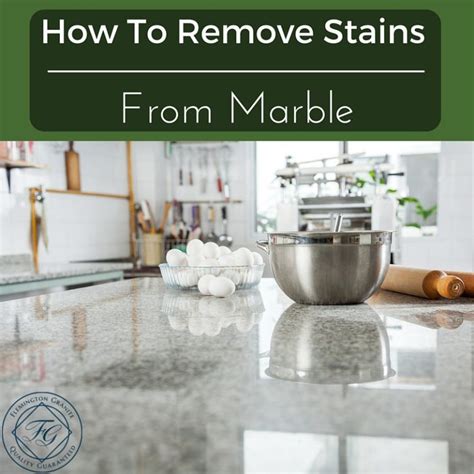The Ultimate Guide to Removing Water Stains on Marble
Marble, with its elegant veining and timeless beauty, is a prized material for countertops, floors, and other surfaces. However, its porous nature makes it susceptible to water stains, which can detract from its aesthetic appeal. This comprehensive guide will equip you with the knowledge and techniques to effectively remove water stains from your marble surfaces, restoring their pristine condition. We'll cover various methods, from simple home remedies to professional solutions, ensuring you find the perfect approach for your specific situation.
What Causes Water Stains on Marble?
Water stains on marble aren't actually water itself; they're the result of mineral deposits left behind as water evaporates. Hard water, containing high levels of calcium and magnesium, is a primary culprit. These minerals crystallize on the marble's surface, creating dull, etched marks. The severity of the stain depends on several factors, including the water's mineral content, the length of exposure, and the type of marble.
Understanding the Stain:
Before attempting any cleaning method, it's crucial to understand the nature of the stain. Is it a surface stain (easily removed) or an etched stain (penetrated deeper)? Surface stains appear dull and cloudy, while etched stains are more deeply ingrained and may feel rough to the touch. Etched stains require more aggressive treatment.
How to Remove Water Stains from Marble: A Step-by-Step Guide
The following methods are presented in order of increasing intensity. Always start with the gentlest method and progress only if necessary. Remember to always test any cleaning solution on an inconspicuous area first to ensure it doesn't damage the marble's finish.
1. Gentle Cleaning with Mild Detergent and Water:
This is your first line of defense against water stains.
- Mix a small amount of mild dish soap (like Dawn) with warm water.
- Gently scrub the stained area using a soft cloth or sponge.
- Rinse thoroughly with clean water and dry with a soft, absorbent cloth. Avoid harsh scrubbing, which can scratch the marble.
2. Baking Soda Paste:
Baking soda is a mild abrasive that can help lift surface stains.
- Make a paste by mixing baking soda with a small amount of water.
- Apply the paste to the stained area and gently rub it in circular motions with a soft cloth.
- Let it sit for a few minutes before rinsing thoroughly and drying.
3. Hydrogen Peroxide:
Hydrogen peroxide is a bleaching agent that can effectively remove some water stains. However, use it cautiously, as it can potentially lighten the marble's color in some cases.
- Apply a small amount of 3% hydrogen peroxide to the stain with a cotton swab or soft cloth.
- Let it sit for several minutes, then gently wipe it away.
- Rinse thoroughly with clean water and dry immediately.
4. Professional Marble Cleaners:
Numerous commercial marble cleaners are available, formulated specifically for removing stains and maintaining marble's shine. Always follow the manufacturer's instructions carefully.
5. Addressing Etched Stains:
Etched stains require more aggressive treatment. While DIY methods may offer limited success, professional restoration is often necessary. They might use diamond honing pads or other specialized techniques to restore the marble's polished surface.
Preventing Water Stains on Marble: Proactive Measures
Prevention is key to maintaining the beauty of your marble surfaces. Here are some preventative measures:
- Regular Cleaning: Wipe up spills immediately to prevent water from sitting on the surface.
- Use Coasters and Trivets: Always use coasters under glasses and trivets under hot dishes.
- Seal Your Marble: Regular sealing helps protect the marble from absorbing water and minerals. Consult a professional for sealing recommendations specific to your marble type.
- Use a Quality Marble Polish: A good quality marble polish can help to protect the surface and maintain its shine.
How Often Should I Seal My Marble?
The frequency of sealing depends on several factors, including the type of marble, the level of traffic, and the climate. Generally, sealing every 1-3 years is recommended.
What are some common mistakes to avoid when cleaning marble?
Avoid using acidic cleaners like vinegar or lemon juice, as these can etch the marble. Also, avoid abrasive cleaners or scrubbing pads that can scratch the surface. Always test any cleaning solution on an inconspicuous area before applying it to the entire surface.
By following these tips and choosing the appropriate method for your situation, you can effectively remove water stains from your marble and maintain its beauty for years to come. Remember, prevention is always better than cure!

